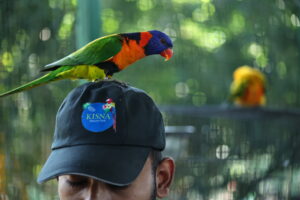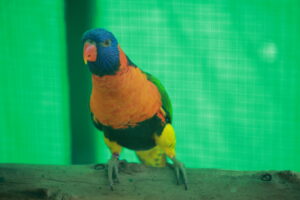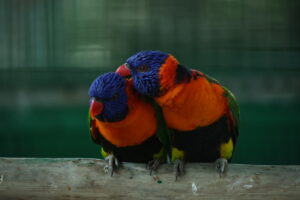The rainbow lorikeet (Trichoglossus moluccanus) is a species of parrot native to Australia, Papua New Guinea, and eastern Indonesia. It is known for its stunning and vibrant plumage, which displays a wide range of colors. Here are some key facts about rainbow lorikeets:
Appearance: Rainbow lorikeets are medium-sized parrots, measuring about 25-30 centimeters (10-12 inches) in length. They have a slender build with a long, pointed tail. The plumage of an adult rainbow lorikeet is predominantly green, with a blue head, red beak, and a bright orange/yellow breast and belly. They also have distinct red patches on their thighs.
Diet: These parrots are nectarivorous, meaning they primarily feed on nectar from flowers. They have a specialized brush-like tongue that helps them extract nectar from blossoms. In addition to nectar, they also consume pollen, fruits, and seeds. In captivity, a balanced diet for rainbow lorikeets includes a combination of commercial lorikeet nectar, fresh fruits, and vegetables.
Behavior: Rainbow lorikeets are highly social and active birds. They are known for their playful and energetic nature. They often gather in small to large flocks, engaging in social activities such as feeding, bathing, and flying together. They are also known for their loud and distinctive calls, which can be heard as a series of screeching, squawking, or chattering sounds.
Habitat: Rainbow lorikeets inhabit a variety of habitats, including rainforests, woodlands, coastal scrubs, and urban areas. They are well-adapted to both tropical and subtropical environments. In urban areas, they can often be seen in parks and gardens where flowering trees and shrubs are present.
Breeding: Rainbow lorikeets form monogamous pairs during the breeding season. They nest in tree hollows, usually high up in eucalyptus trees. The female lays 1-3 eggs, which are incubated by both parents for about 24-26 days. The chicks fledge and leave the nest after 7-9 weeks.
Conservation status: Rainbow lorikeets are listed as a species of Least Concern on the IUCN Red List, which means they are not currently considered endangered. They are widespread and relatively common in their native range. However, habitat loss, trapping for the pet trade, and competition with introduced species can pose threats to local populations.



